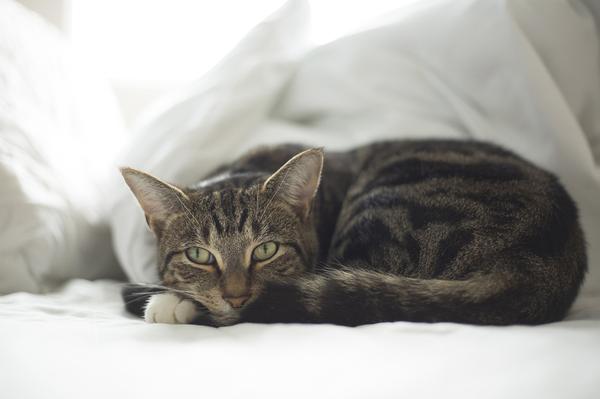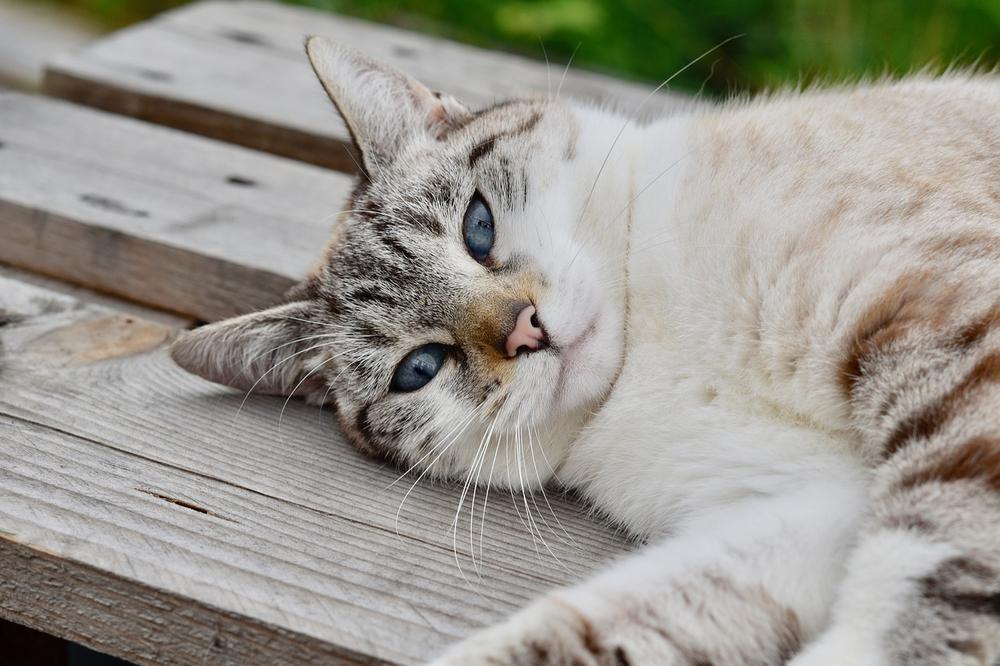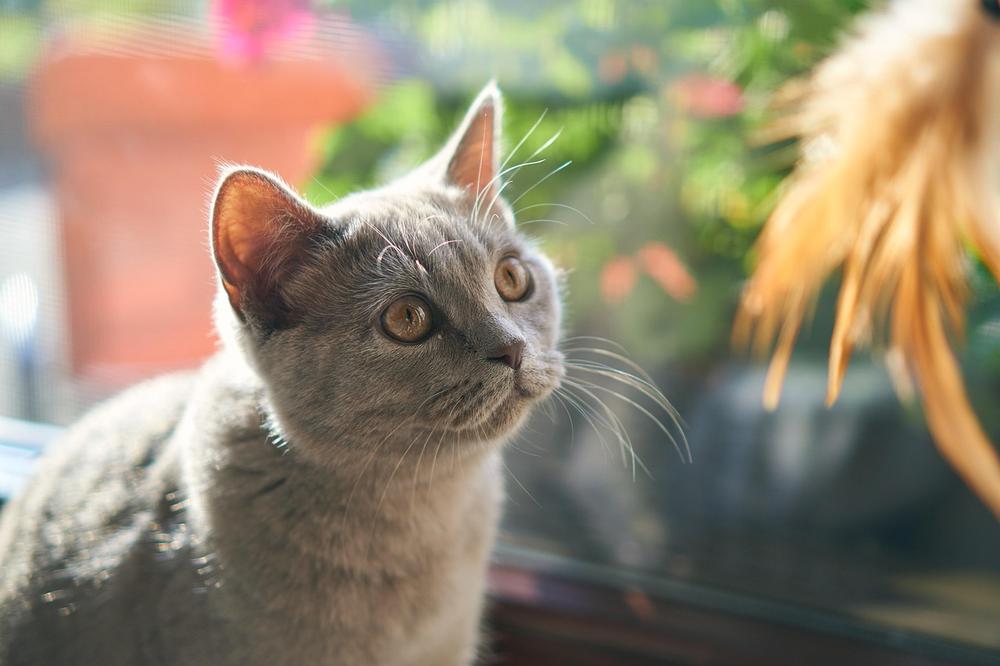Why Is Your Cat's Hair Falling Out in Clumps? Is It Normal?

You'll agree with me when I say:
The sight of your beloved furball with clumps of hair falling out is heart-wrenching. 😢
Your mind races, imagining all the worst-case scenarios — is it a serious health problem?
But listen, don't panic just yet.
Let's uncover the common reasons together.
Causes and Concerns: Cats Losing Clumps of Hair
Cat alopecia: Various causes and concerns
Losing hair is a worrisome problem for cats, just like it is for humans.
But the reasons behind their hair loss can be quite complex.
There are numerous factors that can contribute to this issue.
Let me break it down for you.
What could be causing hair loss in cats?
Well, there are many possibilities…
From allergies and parasites to infections and even stress, cats can experience hair loss due to various reasons.
Even unnoticed diseases or changes in their environment can make them shed more than usual.
And let's not forget about overgrooming, scratching, or genetic factors.
It might seem overwhelming, but you ought to understand all the potential causes.
Recognizing the symptoms of hair loss in cats
So how do you know if your cat is losing hair?
Look out for signs like excessive shedding, red or inflamed skin, clumps of falling hair, or changes in coat quality.
Rapid or significant hair loss might indicate an underlying issue.
Sometimes, cats with alopecia may have patchy hair loss as well.
Inflammatory alopecia can also lead to itching, redness, bumps, sores, or crusts on your cat's skin.

But that's not all!
Changes in behavior and in essence health may also occur.
Watch out for differences in appetite, vomiting, diarrhea, decreased energy levels, increased thirst and urination, or a swollen abdomen.
Allergies may also show through symptoms like conjunctivitis and ear inflammation.
Handling cat alopecia: What you can do
Alright, now what can you do if your cat is losing hair?
Firstly, make a habit of checking their skin and hair regularly. It'll help you notice any changes early on.
Create a comfortable environment for your kitty companion. That alone can make a big difference.
Addressing the underlying condition and promoting hair growth is crucial.
Ensuring proper nutrition and adding supplements to their diet can encourage hair regrowth.
Regular grooming is also important.
Your cat may benefit from long-term management that includes flea prevention, special cat food, or prescribed treatments.
Always follow your veterinarian's advice when dealing with cat alopecia.
Finding the root cause may involve a detailed history, physical examination, and diagnostic tests.
And when it comes to treatment options like an Elizabethan collar, medications, or anti-itch treatments, we'll figure out the best approach for your furry friend together.
Cat Losing Hair on Back Legs and Belly
If your cat's losing hair on their back legs and belly, there are a few things you should think about.
- They might have mange or ringworm, which are common skin problems caused by parasites or fungal infections. You'll need to take them to the vet for treatment.
- Allergies could be to blame. Cats can develop allergies to certain foods or stuff in their environment, like fleas or cleaning products. This can make them lose hair and feel itchy and irritated.
- Hormonal imbalances, like hyperthyroidism or Cushing's disease, can mess with a cat's hormone levels and make them lose hair.
- Sometimes stress or anxiety can do this too. Changes in their surroundings, like bringing a new pet home, can stress out your cat and cause them to lose hair.
- Another reason could be that your cat is licking or scratching themselves way too much. This could mean they're bored, anxious, or even have a medical issue.
To find out what's causing your kitty's hair loss, you should definitely see a vet.
They can do the right tests and give you treatment options that will help your cat.

And don't forget, creating a comfy and calm atmosphere for your furry friend can also prevent hair loss. 😺
But what about hair loss on the back of the neck?
You may have noticed that your cat is losing clumps of hair around their neck, and it's important not to ignore this.
It could indicate an underlying issue or discomfort affecting their skin, so let's explore further!
Cat Losing Clumps of Hair Around Neck
If your cat is losing clumps of hair around its neck, it could be due to dermatitis from flea collars or irritants. It may also indicate an underlying health issue like hormonal imbalance. Visit a vet if you notice hair loss along with itching or scratching.
Cat losing clumps of hair around neck?
Not a good look, huh?
Well, listen up...
There are a few reasons for this hair loss.
One possibility is dermatitis caused by flea collars or irritating materials.
Picture those annoying pests making your cat's skin red and inflamed.
Yikes!
No wonder the hair starts falling out.
But wait, there's more...
That hair loss on the back of the neck might indicate an underlying issue. It could be a hormonal imbalance or something else happening inside your furry friend.
You don't want your cat to feel uncomfortable, right?
So pay attention to these symptoms. They might suggest a health problem affecting your cat's skin.
If you notice hair loss along with itching or scratching, it's best to take a trip to the vet.
They can figure out the exact cause and provide the necessary treatment.
Meanwhile, try to make your furry buddy as comfortable as possible.
Avoid potential irritants and shower them with love and attention.
They'll appreciate the TLC!
And if you're worried about your cat's skin, I understand.
But don't worry, I've got you covered! If you want to learn more about why cat noses change color, check out my blog post Why Do Cat Noses Change Color.
It's filled with useful information and insights that can help put your mind at ease.
How Much Hair Loss Is Normal for Cats?
Your cat losing hair is no big deal.
It's completely normal.
Don't freak out if you see clumps of fur lying around. It just means your furry friend is shedding and growing new hair like she's supposed to.
But, if the hair loss seems excessive and her fur is thinning, there might be something wrong with her health. Don't take chances - take her to the vet for a proper diagnosis.
It's better to play it safe than feel sorry later!
To minimize shedding and those dreaded hairballs, ensure you brush your cat regularly during shedding seasons.

Invest in a good pet brush that makes the job easier for both you and your fluffy companion.
Yeah, you might think using topical oils will solve the problem, but trust me, letting your cat ingest oils is more effective.
Give her a balanced diet with essential fatty acids for luscious fur growth and a shiny coat.
The amount of hair your cat loses can vary depending on the season and the individual. If you notice any changes in her fur thickness, don't hesitate to consult your vet for some peace of mind.
Psst! If you're concerned about your cat's shedding, I advise you to check out my article on Do Cats Shed More in the Summer. It provides helpful information on whether excessive shedding is normal during the hotter months. By understanding the seasonal shedding patterns, you can help put your worries at ease and ensure your furry friend stays happy and healthy.
And as your cat ages, you may notice changes in her fur quality and shedding patterns.
But don't worry, there are ways to ensure she stays healthy and has a beautiful coat!
Why Is My Elderly Cat Shedding So Much?
As cats get older, they start shedding more.

Here are some tips to help you understand why your elderly cat is shedding so much:
- The food you give your cat affects its coat health. Make sure their diet meets their nutritional needs.
- Giving your cat omega-3 fatty acids as supplements can improve the quality of their coat and reduce shedding.
- Regular grooming is important to get rid of loose hair and prevent tangling. Use cat-specific brushes or combs that are gentle.
- Older cats may struggle to groom themselves due to mobility issues or arthritis. Help them out by gently brushing their fur and trimming excess hair.
- A clean and stress-free environment is important for your cat. Stress can lead to excessive shedding, so provide a calm and comfortable space for them.
- Talk to your vet to rule out any health problems that could be causing the excessive shedding.
Older cats need extra care. By following these tips, you can minimize shedding and keep your feline friend healthy and comfy.
Can Worms in Cats Cause Hair Loss?
Hair loss in cats can be caused by nutritional deficiencies, parasitic infections, and neurotic diseases.
To keep your cat's mane intact, you must control fleas and provide mental stimulation.
Ringworm, a fungal infection that forms circular lesions on the skin, can also result in hair loss for your feline friend. This troublesome infection brings along other symptoms like dehydration, weakness, anemia, shock, and low blood pressure.
Being aware of these potential causes will help you take better care of your cat's precious fur and all in all health.
Final thoughts: Cats, hair loss, and clumps
Key Takeaways:
- Cat alopecia can be caused by various factors, including skin allergies, parasites, and underlying disorders.
- Symptoms of hair loss may include excessive shedding, red or inflamed skin, and the presence of clumps of hair.
- Hair loss can be managed by regular skin and hair checks, providing a comfortable environment, and addressing the underlying condition.
- Maintaining a healthy coat involves bathing the cat and providing a diet with natural oils.
- Red or inflamed skin, particularly around the neck or back of the neck, may indicate an underlying hormonal imbalance.
- Pay attention to shedding patterns and use regular brushing to reduce shedding and hairballs.
- Aging cats may experience changes in coat quality and shedding patterns, requiring a balanced diet and grooming assistance.
- Proper flea control and mental stimulation are important to prevent parasitic infections and neurotic diseases.
- Ringworm is a common fungal infection that can cause hair loss in cats.
- Parasitic infestations can lead to other symptoms such as dehydration and weakness.
And that wraps up today's article.
If you wish to read more of my useful articles, I recommend you check out some of these: Can You Use Human Shampoo on Cats, Cat Not Eating After Spay, How Long Does It Take for a Cat to Die if It Stops Eating, Why Is My Cats Nose Cold, and Is Dracaena Toxic to Cats
Talk soon,
-Sarah Davis